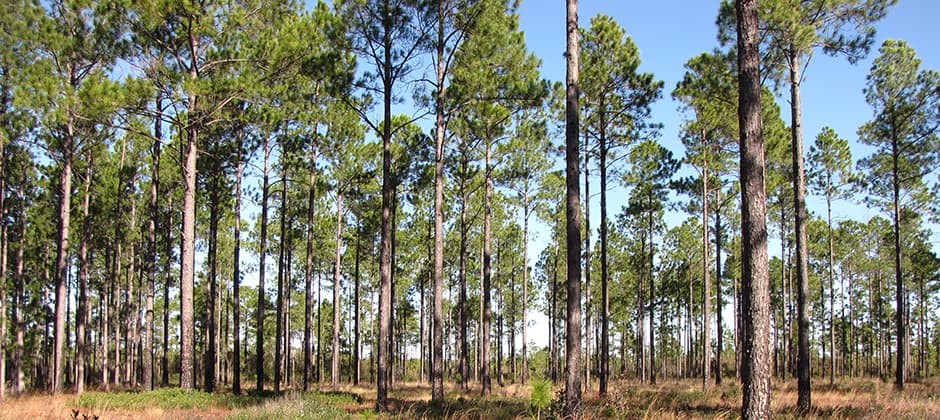Share this article
Conserving the best lands for longleaf pine
Not all land is equal when it comes to the best acquisitions to maintain and connect longleaf pine ecosystems in North Carolina.
The specialized ecosystem in the Southeast has been reduced to just 5-7% of what it was historically. “Not only is that a massive concern with so few of these longleaf pine forests left, but we also see declines in species that call those forests home,” said Tina Mozelewski, a lead scientist at Conservation Science Partners, a research nonprofit that works to solve conservation problems.
Mozelewski and her colleagues knew that even forest restoration projects successful in the short term may be less successful in the longer term as landscapes change in response to climate change, land use change and management. The team wondered what land would be best to prioritize in order to conserve and restore some of those important longleaf pine areas, and how land selection would influence restoration success both now and in the future.
“I’ve been interested in how you test how conservation strategies will perform in the future before you invest money and time on on-the-ground conservation,” Mozelewski said. “You can hedge your bets and at least throw out the strategies that are less likely to be successful.”
While longleaf pine ecosystems are protected on some state and federal land, nonprofits have stepped in to connect some of those areas by buying and conducting restoration work on private land. Mozelewski, who was a PhD student at North Carolina State University at the time, led a study published in Conservation Biology to tackle which types of land nonprofits might want to acquire to make the biggest difference in longleaf pine connectivity and conservation.
Mozelewski and her colleagues used a model to track changes in forest composition over time to see how restoring different lands would impact habitat dynamics and connectivity. They focused on guilds of wildlife species based on their maximum dispersal distances, including shorter-distance dispersers like reptiles and amphibians, and longer-distance dispersers like small mammals. They also looked to see if they were habitat specialists that need longleaf pine forests to survive or generalists that can live in a variety of pine forest types.
Then, they looked at four different approaches to land acquisition—restoring land as close as possible to managed or protected areas, restoring lands that had high geodiversity characteristics, acquiring the cheapest land and random land acquisition. They also simulated different kinds of forest restoration, including longleaf pine, mixed pine and hardwood mixed forests.
One big takeaway was that for specialist wildlife species, especially those with shorter dispersal distances, where the acquired land was located really mattered. Acquiring land already close to protected areas improved connectivity more than the other strategies they found. Mozelewski and her colleagues also found that the cheapest land wasn’t the best.
But for generalist species, they found, it didn’t matter as much where the land was or what the motivation for conservation was.
The next step, Mozelewski said, is to look at how climate and land use change may affect which lands are best to conserve. “Are these strategies actually making a difference when you add climate and land use change into the mix?” she said.
Header Image: To increase connectivity in longleaf pine ecosystems, researchers say acquiring land close to already protected areas may help. Credit: The_Gut








